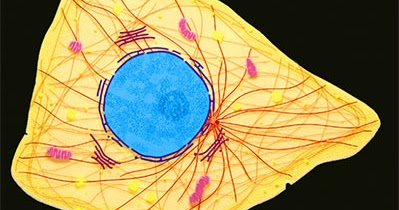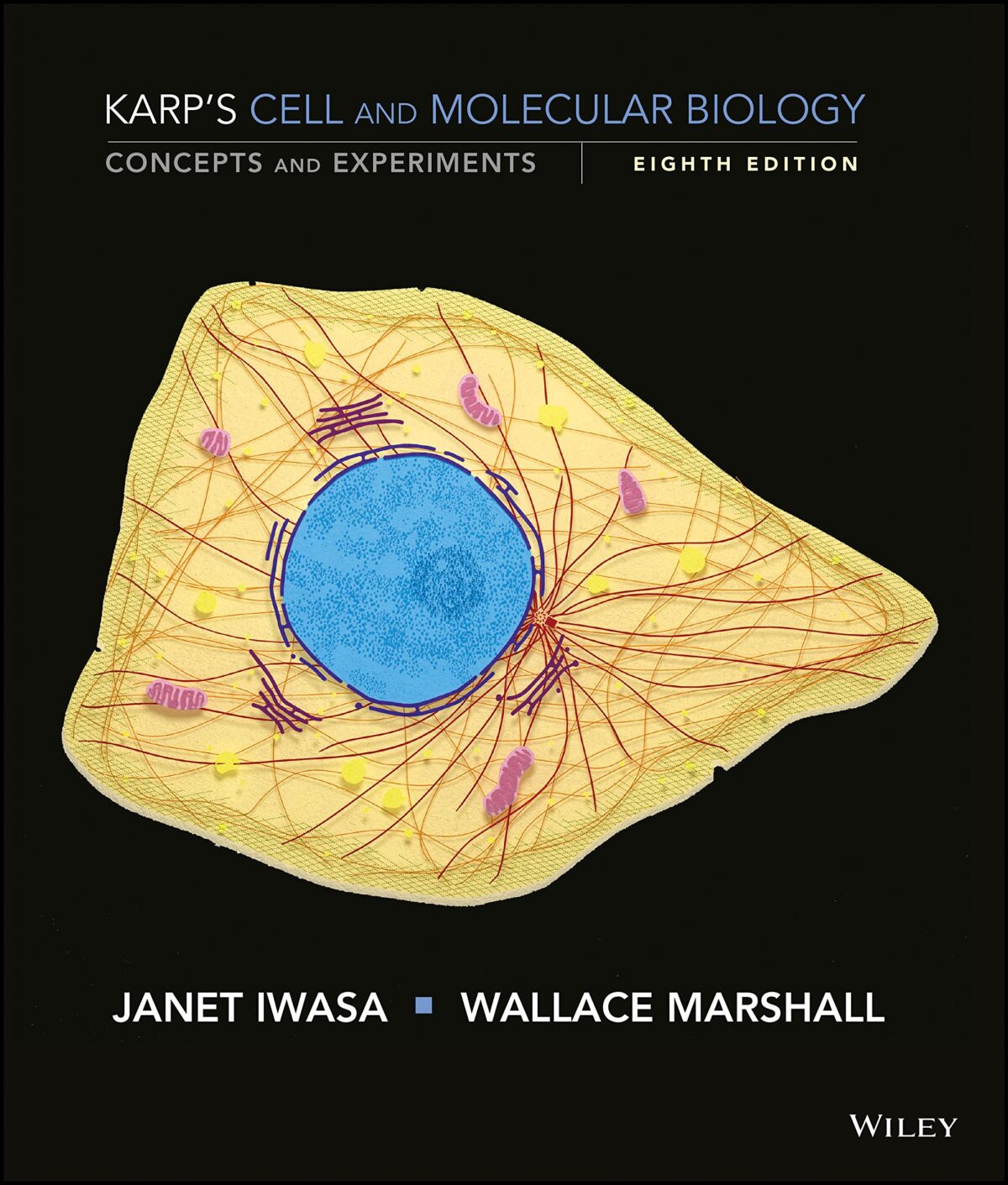Would you like to get Cell and Molecular Biology Karp 8th Edition PDF Download? Are you studying cell and molecular biology and do you need a good book to learn all the basic concepts you need to excel? Karp’s cell and molecular biology book pdf is all you need. Karp’s cell and molecular biology book is a very popular book among students and that’s why we have made it available for fast free and easy accessibility.
The Cell and Molecular Biology Karp 8th Edition Offers a proper balance of theories and experimentation. Experimental detail is offered when it helps to buttress the concept being explained. In The Cell and Molecular Biology Karp 8th Edition pdf book, Illustrations are paired with micrographs to help students compare the real (micrograph) with the ideal (illustration). So, if you would like to learn all the basic concepts you need to excel in Cell and Molecular Biology then The cell and molecular biology Karp 8th edition pdf book is for you.
Table of Contents
Karp’s Cell and Molecular Biology 8th Edition PDF Free Download Details
- Book Title: Karp’s Cell and Molecular Biology PDF
- Edition: 8th
- Next Edition: Karp’s Cell and Molecular Biology 9th Edition PDF
- Author: Gerald Karp, Janet Iwasa, Wallace Marshall
- Published: 2015
- ISBN: 9781119598169
- Goodreads Link: Karp’s Cell and Molecular Biology 9th Edition by Gerald Karp PDF
- Formats: PDF
- No. of pages: 944 pages
- Size: 217 MB
- Genre: TextBook
- Language: English
- File Status: Available
- Price: $0
About The Cell and Molecular Biology Karp 8th Edition PDF eBook
The Cell and Molecular Biology Karp 8th Edition PDF Book is designed for courses in Cell Biology offered at the Sophomore/Junior level. Karp’s Cell and Molecular Biology: Concepts and Experiments, Binder Ready Version, 8th Edition continues to be the best book in the market at connecting key concepts to the experiments that reveal how we know what we know in the world of Cell Biology. This classic text explores core concepts in considerable depth, often adding experimental detail. It is written in an inviting style and at mid-length, to assist students in managing the plethora of details encountered in the Cell Biology course. In this edition, two new co-authors take the helm and help to expand upon the hallmark strengths of the book, update and integrate text and media in a useful way, improving the student learning experience.
New To The Cell and Molecular Biology Karp 8th Edition
- New Co-authors. Janet Iwasa (University of Utah) brings her expertise in illustration and 3D visualization of molecular processes to aid in student understanding of core concepts and to expand upon the experimental focus of the text. Wallace Marshall (UC San Francisco) is a well-published Cell Biology researcher and serves on the President’s board of the American Society of Cell Biology. The unique credentials and skill-sets of these new authors help to transform this proven text into a modern, media-rich course solution.
- Integration of experimental approaches throughout the text, Experimental Videos, as well as increased “Experimental Pathways” sections and in the techniques-focused chapter
- Increased emphasis on relevance to human health through “The Human Perspective” sections which have been expanded and updated.

Table of contents For Cell and Molecular Biology Karp 8th Edition PDF
1 Introduction to the Study of Cell and Molecular Biology 1
1.1 The Discovery of Cells 2
1.2 Basic Properties of Cells 3
1.3 Two Fundamentally Different Classes of Cells 7
1.4 Viruses 23
2 The Chemical Basis of Life 32
2.1 Covalent Bonds 33
2.2 Noncovalent Bonds 34
2.3 Acids, Bases, and Buffers 39
2.4 The Nature of Biological Molecules 40
2.5 Four Types of Biological Molecules 42
2.6 The Formation of Complex Macromolecular Structures 79
3 Bioenergetics,Enzymes, and Metabolism 86
3.1 Bioenergetics 87
3.2 Enzymes as Biological Catalysts 94
3.3 Metabolism 108
4 The Structure and Function of the Plasma Membrane 120
4.1 An Overview of Membrane Functions 121
4.2 A Brief History of Studies on Plasma Membrane Structure 123
4.3 The Chemical Composition of Membranes 125
4.4 The Structure and Functions of Membrane Proteins 130
4.5 Membrane Lipids and Membrane Fluidity 138
4.6 The Dynamic Nature of the Plasma Membrane 140
4.7 The Movement of Substances Across Cell Membranes 147
4.8 Membrane Potentials and Nerve Impulses 164
5 Aerobic Respiration and the Mitochondrion 178
5.1 Mitochondrial Structure and Function 179
5.2 Oxidative Metabolism in the Mitochondrion 183
5.3 The Role of Mitochondria in the Formation of ATP 189
5.4 Translocation of Protons and the Establishment of a Proton-Motive Force 198
5.5 The Machinery for ATP Formation 199
5.6 Peroxisomes 206
6 Photosynthesis and the Chloroplast 211
6.1 Chloroplast Structure and Function 213
6.2 An Overview of Photosynthetic Metabolism 214
6.3 The Absorption of Light 216
6.4 Photosynthetic Units and Reaction Centers 218
6.5 Photophosphorylation 225
6.6 Carbon Dioxide Fixation and the Synthesis of Carbohydrate 226
7 Interactions Between Cells and Their Environment 235
7.1 The Extracellular Space 236
7.2 Interactions of Cells with Extracellular Materials 244
7.3 Interactions of Cells with Other Cells 250
7.4 Tight Junctions: Sealing The Extracellular Space 260
7.5 Gap Junctions and Plasmodesmata: Mediating Intercellular Communication 262
Plasmodesmata 265
7.6 Cell Walls 266
8 Cytoplasmic Membrane Systems: Structure, Function, and Membrane Trafficking 270
8.1 An Overview of the Endomembrane System 271
8.2 A Few Approaches to the Study of Endomembranes 273
8.3 The Endoplasmic Reticulum 279
8.4 The Golgi Complex 290
8.5 Types of Vesicle Transport and Their Functions 295
8.6 Lysosomes 303
8.7 Plant Cell Vacuoles 307
8.8 The Endocytic Pathway: Moving Membrane and Materials into the Cell Interior 308
8.9 Posttranslational Uptake of Proteins by Peroxisomes, Mitochondria, and Chloroplasts 316
9 The Cytoskeleton and Cell Motility 324
9.1 Overview of the Major Functions of the Cytoskeleton 325
9.2 The Study of the Cytoskeleton 326
9.3 Microtubules 330
9.4 Intermediate Filaments 354
9.5 Microfilaments 356
9.6 Muscle Contractility 364
9.7 Nonmuscle Motility 371
10 The Nature of the Gene and the Genome 386
10.1 The Concept of a Gene as a Unit of Inheritance 387
10.2 Chromosomes: The Physical Carriers of the Genes 388
10.3 The Chemical Nature of the Gene 393
10.4 The Structure of the Genome 398
10.5 The Stability of the Genome 406
10.6 Sequencing Genomes: The Footprints of Biological Evolution 411
11 Gene Expression: From Transcription to Translation 426
11.1 The Relationship between Genes, Proteins, and RNAs 427
11.2 An Overview of Transcription in Both Prokaryotic and Eukaryotic Cells 429
11.3 Synthesis and Processing of Eukaryotic Ribosomal and Transfer RNAs 435
11.4 Synthesis and Processing of Eukaryotic Messenger RNAs 441
11.5 Small Regulatory RNAs and RNA Silencing Pathways 455
11.6 Encoding Genetic Information 461
11.7 Decoding the Codons: The Role of Transfer RNAs 464
11.8 Translating Genetic Information 468
12 Control of Gene Expression 483
12.1 Control of Gene Expression in Bacteria 484
12.2 Control of Gene Expression in Eukaryotes: Structure and Function of the Cell Nucleus 488
12.3 An Overview of Gene Regulation in Eukaryotes 512
12.4 Transcriptional Control 514
12.5 RNA Processing Control 533
12.6 Translational Control 536
12.7 Posttranslational Control: Determining Protein Stability 541
13 DNA Replication and Repair 545
13.1 DNA Replication 546
13.2 DNA Repair 564
13.3 Between Replication and Repair 568
14 Cellular Reproduction 572
14.1 The Cell Cycle 573
14.2 M Phase: Mitosis and Cytokinesis 581
14.3 Meiosis 602
15 Cell Signaling and Signal Transduction: Communication Between Cells 617
15.1 The Basic Elements of Cell Signaling Systems 618
15.2 A Survey of Extracellular Messengers and Their Receptors 621
15.3 G Protein-Coupled Receptors and Their Second Messengers 621
15.4 Protein-Tyrosine Phosphorylation as a Mechanism for Signal Transduction 636
15.5 The Role of Calcium as an Intracellular Messenger 648
15.6 Convergence, Divergence, and Cross-Talk Among Different Signaling Pathways 653
15.7 The Role of NO as an Intercellular Messenger 655
15.8 Apoptosis (Programmed Cell Death) 656
16 Cancer 664
16.1 Basic Properties of a Cancer Cell 665
16.2 The Causes of Cancer 667
16.3 The Genetics of Cancer 669
16.4 New Strategies for Combating Cancer 687
17 The Immune Response 699
17.1 An Overview of the Immune Response 700
17.2 The Clonal Selection Theory as It Applies to B Cells 704
17.3 T Lymphocytes: Activation and Mechanism of Action 707
17.4 Selected Topics on the Cellular and Molecular Basis of Immunity 710
18 Techniques in Cell and Molecular Biology 732
18.1 The Light Microscope 733
18.2 Transmission Electron Microscopy 740
18.3 Scanning Electron and Atomic Force Microscopy 746
18.4 The Use of Radioisotopes 748
18.5 Cell Culture 749
18.6 The Fractionation of a Cell’s Contents by Differential Centrifugation 752
18.7 Isolation, Purification, and Fractionation of Proteins 752
18.8 Determining the Structure of Proteins and Multisubunit Complexes 758
18.9 Fractionation of Nucleic Acids 760
18.10 Nucleic Acid Hybridization 762
18.11 Chemical Synthesis of DNA 764
18.12 Recombinant DNA Technology 764
18.13 Enzymatic Amplification of DNA by PCR 769
18.14 DNA Sequencing 771
18.15 DNA Libraries 773
18.16 DNA Transfer into Eukaryotic Cells and Mammalian Embryos 775
18.17 Determining Eukaryotic Gene Function by Gene Elimination or Silencing 778
18.18 The Use of Antibodies 780
Glossary G-1
Additional Readings A-1
Index I-1
ABOUT THE AUTHOR
Gerald Karp is the author of Cell and Molecular Biology: Concepts and Experiments, Binder Ready Version, 8th Edition, published by Wiley. Janet Iwasa is a data visualization expert and assistant professor of biochemistry at the University of Utah, renowned for her contributions to molecular and cellular visualizations.
OR
Get Cell and Molecular Biology Karp PDF Free Download Below:
>>> Karp’s Cell and Molecular Biology 9th Edition PDF <<<

its showing 404 error
Hello Yash,
The Error has been fixed.